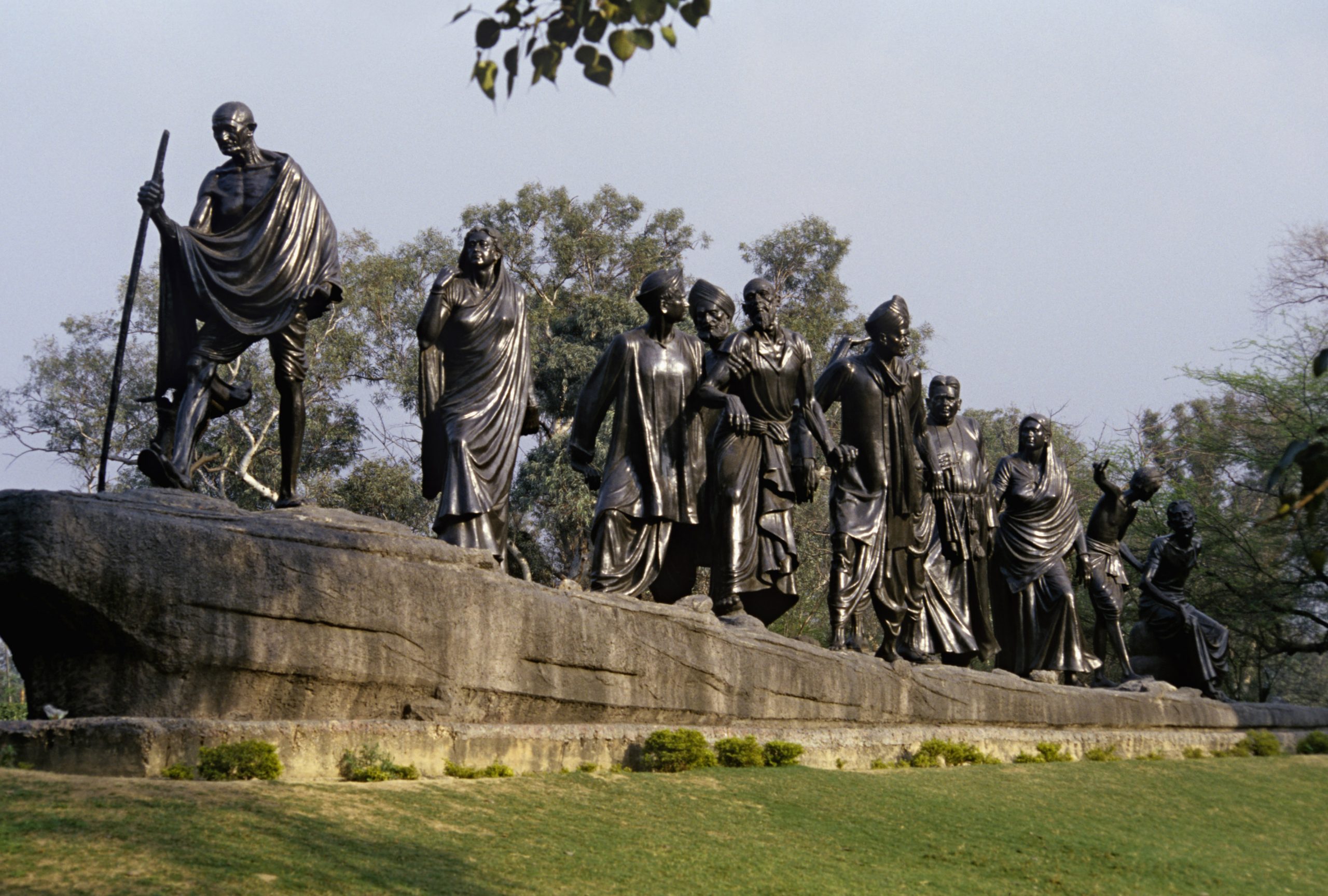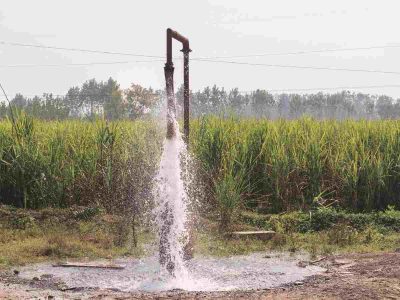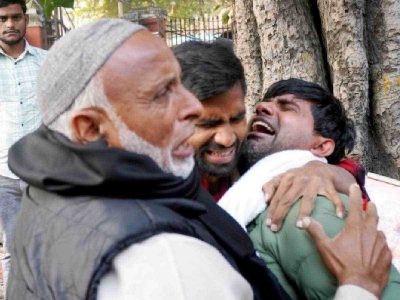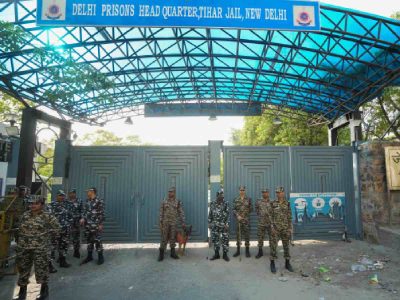Visitors to Lady Hardinge Medical College and Hospital are sure to encounter a life-size statue of Lady Hardinge herself, who established this prestigious institution in 1916. Revered by generations of students, she is affectionately known as ‘Amma’ and is a symbol of inspiration for aspiring medical professionals.
Delhi’s statue landscape further includes the Gyarah Murti, a remarkable sculpture by renowned artist Devi Prasad Roy Choudhury. This grand artwork captures the iconic Dandi March of 1931, led by Mahatma Gandhi as part of his Civil Disobedience Movement. Alongside Gandhi are two revered freedom fighters, Matangini Hazra and Sarojini Naidu, who were instrumental in India’s struggle for independence.
Devi Prasad Roy Chowdhury’s sculpting repertoire is vast, ranging from busts to life-sized and larger-than-life works. In addition to Gyarah Murthi, he has crafted significant statues such as the bronze statue of Chithira Tirunal Balarama Varma in Thiruvananthapuram, the Martyrs’ Memorial in Patna, and the Triumph of Labour sculpture in Chennai.
Despite these representations, there remains a dearth of statues celebrating women in the national capital. Notable exceptions include the life-sized statue of Sardar Patel at Patel Chowk and the presence of statues of former prime minister Indira Gandhi and Kittur Chennamma within the Parliament House complex.
As visitors proceed towards the Parliament House, they will find additional sculptures, including those of Mahatma Gandhi and Dr BR Ambedkar.
Ram V Sutar, an esteemed sculptor, unveiled the 16-foot statue of former Prime Minister Indira Gandhi at gate number 5 of the Parliament in January 1996. Renowned for his craftsmanship, Sutar has marked his 99th birthday, showcasing a legacy of creating enduring representations of history and leadership.
The statue of legendary Karnataka warrior Kittur Chennamma was unveiled in the Parliament House complex. The monument, revealed in 2007 by then-President Pratibha Singh Patil, stands as a tribute to her extraordinary courage and leadership.
This momentous event was attended by distinguished personalities, including former Prime Minister Manmohan Singh, former Home Minister Shivraj Patil, ex-Speaker Somnath Chatterjee, and then-Leader of Opposition LK Advani.
Despite the parliament’s numerous male statues, former prime minister Indira Gandhi and Kittur Chennamma stand as rare representations of women’s contributions to Indian history and politics within its premises.
Saga behind statues
Kittur Chennamma, the valiant queen of the princely state of Kittur in Karnataka, is remembered as one of the earliest leaders to have fiercely opposed the British tax collection system, marking her place in the annals of history as a freedom fighter. Her legacy, immortalised in stone, inspires generations to come.
Juxtaposed with Chennamma’s statue is an equestrian monument of Rani Laxmi Bai, located on a street in Jhandewalan. This striking representation of the warrior queen underscores her significant role in India’s freedom struggle.
Sculptor Ram Sutar, known for his exceptional craftsmanship, reflects on the dearth of statues commemorating women. “I really do not know why those who matter are not keen to make the statues of women,” he once lamented. This poignant observation highlights the need for greater recognition of women’s contributions in the public sphere.
Further down the Parliament Street stands the majestic figure of Yakshini, positioned in front of the Reserve Bank of India building. This artwork, conceived on the suggestion of Carl Khandalawalla, celebrates Kubera, the god of wealth, symbolising the RBI’s role as a guardian of the nation’s financial wealth. The vision of the statues, Yaksha and Yakshini, guarding the Bank’s treasures, resonated with then-Prime Minister Jawahar Lal Nehru, who supported their installation.
Both these landmark statues were crafted by the legendary sculptor Ram Kinker Baij, who meticulously selected the perfect quality of stone, scoured quarries, and navigated transportation challenges to realise his vision. However, the project faced considerable delays, with the RBI management expressing concerns over Baij’s management skills and adherence to deadlines.
Nevertheless, the fruits of Baij’s labor were eventually unveiled, polished, and stood proudly by December 1966. Professor Virendra Wadhwa of Zakir Hussain Delhi College, who witnessed Baij’s dedication firsthand, recalls the artist’s intense focus on creating the sculptures in a vacant plot at Rafi Marg.
These sculptures not only symbolise historical figures and ideals but also represent the enduring commitment of artists like Ram Kinker Baij to immortalise India’s rich cultural heritage in stone. Their stories resonate with the journey of art in public spaces, emphasising the need to recognise and honor diverse narratives.
Behind the sculptures
As Delhi’s grand sculptures stand tall, their stories of creation, delay, and public reaction paint a nuanced picture of the city’s artistic heritage. Trilok Deep, a seasoned journalist who once covered the installation of the Yaksha and Yakshini sculptures outside the Reserve Bank of India, recalls the initial public backlash against depicting Yakshini in her natural form.
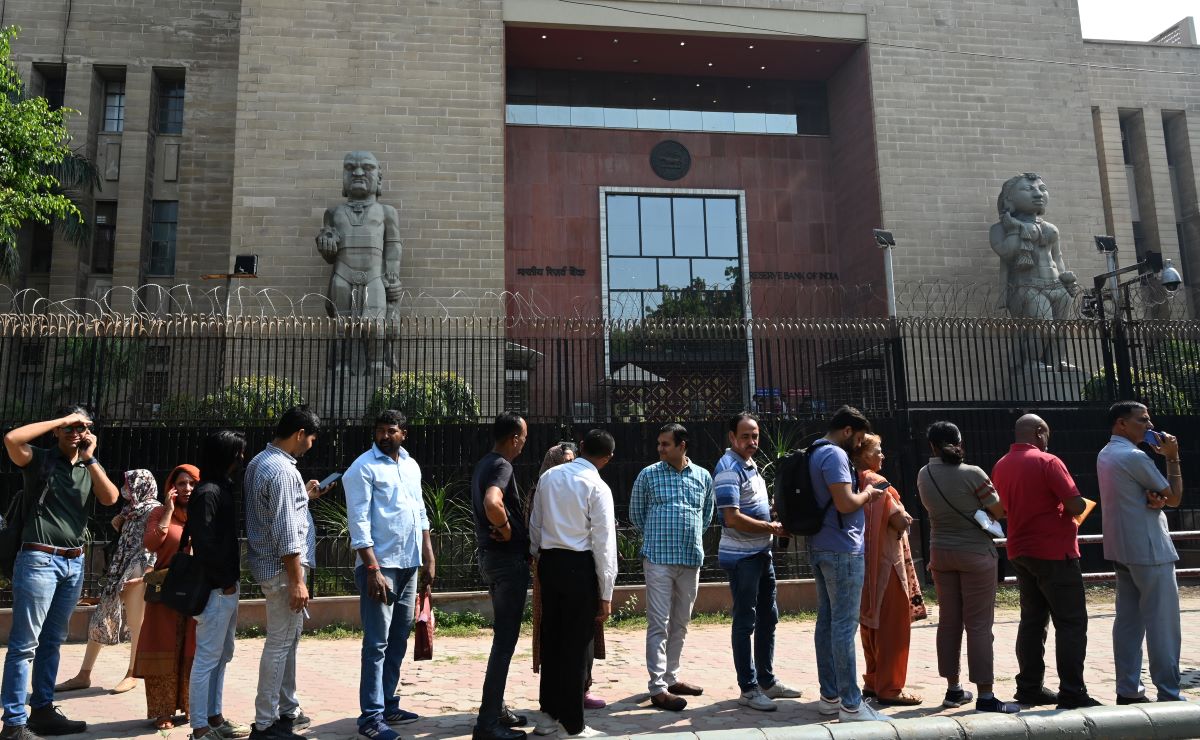
“I remember once they were installed, there were protests as Yakshini was depicted in her natural beauty,” he said, adding that the demonstrations were, however, eventually overridden, emphasising the evolving values and aesthetics in public art.
Yet, the presence of sculptures honoring women remains a glaring absence. Despite the rich history of eminent female sculptors like Leela Mukherjee, Pilloo Pochkhanawala, Usha Rani Hooja, and Meera Mukherjee, their works are noticeably absent from the streets of Delhi and beyond. Sculptor Dass Ji Purshottam’s poignant observation sheds light on the structural limitations of the sculpture industry, where commissions predominantly focus on male subjects.
Indeed, the statuescape appears to be a bastion of masculinity, presenting an enduring challenge for gender representation in the world of stone and clay. As we reflect on the narratives of our public sculptures, there is a call to action to reshape the landscape and honor diverse perspectives, sooner rather than later.

